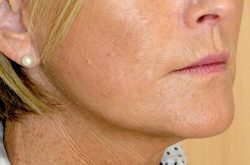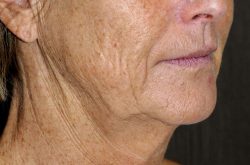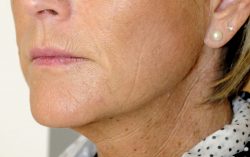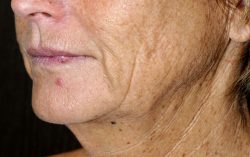FACE
FACELIFT
A facelift can also be called Cervical Facial Lift.




Description
The facelift corrects cheeks and neck ptosis resulting from aging. Its aim is to rebuild the lower part of the face and the neck.
This intervention helps keep the face fresh and young without changing it. Results are natural.
This surgery is often combined with an eyelids correction and/or a chin liposuction and/or a lipofilling of the nasolabial folds and/or the malar area.
I often use general anaesthesia coupled with local anaesthesia to make post-surgery comfortable. In certain cases, only the local anaesthesia is needed.
In practical terms
Before the surgery:
The patient schedules an appointment with the surgeon to find out about the patient’s requests. The surgeon also provides a pre-operative assessment and care. The patient then meets the anaesthesist at least 48 hours before the surgery.
It is recommended not to smoke 30 days before the surgery and not to take any medication containing aspirin or anti-inflammatory 10 days before.
I also recommend the patient to wash their hair with desinfectant soap the morning of the surgery.
During the surgery:
Facelifts are performed under local or general anaesthesia.
The incision is located in the patient’s hair, on the side of the head, and goes down towards the neck and around the ear. It is hidden in the natural skin folds making scars very thin and almost invisible.
The surgeon detaches the skin, then stretches the muscular-aponeurotic part at the face level and the platysma muscle at the neck level.
Thus, the aim of the surgery is to place the deep face tissue rather than pulling the skin.
The excess of skin is removed and the remaining tissue is stitched. Absorbable suture material is used in order to improve the scar quality and to make post-surgery easier.
The patient remains hospitalised for 1 day.
After the surgery:
Post-surgery pain is limited since a 8-12 hours action local anaesthesia is often used in addition to the general anaesthesia. A bandage is placed on the scars and removed after 4 days.
The patient can go back to a normal life after 8 to 10 days, depending on the bruises.
It is also recommended to sleep with 2 pillows the days following the surgery (in order to maintain the head above the level of the heart). This diminishes the swelling and risks of bleeding.
FAQ
What are the complications?
- Bleeding: during the surgery, the cauterised small blood vessels may bleed. In order to prevent this from happening, I stick the skin back together with a natual thrombin based glue. The later helps local coagulation.
- Infections are extremely rare. We work in extremely strict conditions of sterilisation and face immunity is excellent thanks to its vascularization.
- Sensitivity: the skin that has been lifted may loose a bit of its sensitivity. This can be solved but the skin is likely to be less sensitive the days that follow the intervention.

